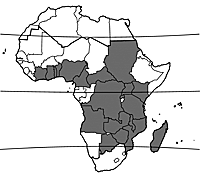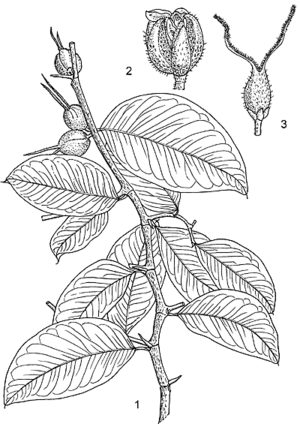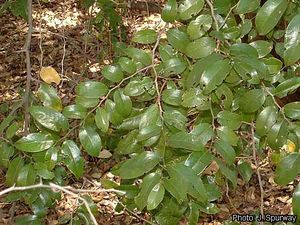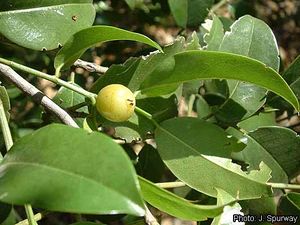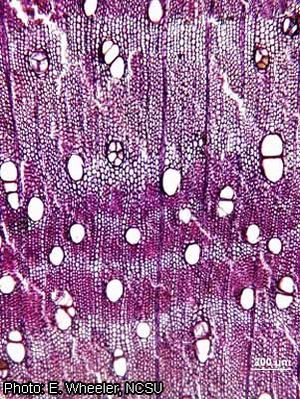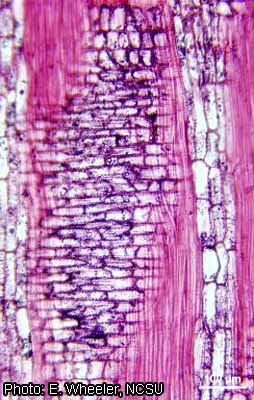Chaetachme aristata (PROTA)
Introduction |
Chaetachme aristata E.Mey. ex Planch.
- Protologue: Ann. Sci. Nat., Bot., sér. 3, 10: 341 (1848).
- Family: Celtidaceae (APG: Cannabaceae)
- Chromosome number: n = 15
Synonyms
- Chaetachme madagascariensis Baker (1885),
- Chaetachme microcarpa Rendle (1916).
Vernacular names
- Thorny elm (En).
Origin and geographic distribution
Chaetachme aristata is found from Côte d’Ivoire eastwards to Sudan and Kenya and it extends southward to Angola, Botswana, Zimbabwe, Mozambique, South Africa and Swaziland. It also occurs in Madagascar.
Uses
In DR Congo the wood of Chaetachme aristata is used to make musical instruments like guitars and tam-tams. It has been reported to be used in Ghana to make the ‘talking drums’ of the Asante people. In Kenya the wood is used for clubs, and in Madagascar for spears. In South Africa the wood is used for tool handles and small ornaments. The Maasai people in Kenya use the spiny branches to construct fences.
In Côte d’Ivoire and Madagascar leaves and bark are applied in traditional medicine to treat coughs, colds and throat problems. In DR Congo an infusion of the roots is drunk as a purgative. The Zulu people of South Africa use the bark to treat haemorrhoids and the powdered roots to relieve toothache. In the Central African Republic a filtrate of young leaves ground in water is drunk to treat tuberculosis.
Properties
The wood is yellow-white. It is recorded as heavy in Kenya, but elsewhere as light-weight. In Madagascar it is considered not durable, but is appreciated because it works well. Leaves and stems contain 0.05% and 0.08% of alkaloids, respectively. The seed contains 6.4% of oil of which 82% is linoleic acid.
Description
- Dioecious or monoecious, deciduous shrub to small tree up to 13 m tall, spiny; bole up to 30 cm in diameter; bark smooth, grey, becoming fibrous and longitudinally grooved; branches spreading, drooping, zigzag, with spines up to 3 cm long; twigs short-hairy to glabrous.
- Leaves alternate, simple; stipules up to 2 cm long, united, soon falling; petiole 3–6 mm long; blade elliptical to elliptical-ovate, 3–9 cm × 1.5–5 cm, base usually rounded and slightly asymmetrical, apex acute to short-acuminate, with distinct bristle up to 7 mm long, margins entire, occasionally toothed, glabrous and glossy dark green above, sparsely short-hairy and paler below, pinnately veined with c. 10 pairs of indistinct lateral veins.
- Inflorescence an axillary cyme up to 1.5 cm long, often branched and congested, up to 30-flowered.
- Flowers unisexual, 5-merous, greenish white; pedicel 1–3 mm long; male flowers with tepals 2–3.5 mm × 1.5–2 mm, 5 stamens and a rudimentary ovary; female flowers often solitary in upper leaf axils, with tepals 1–2 mm × 1–1.5 mm and superior, sparsely hairy ovary 3–5 mm long, styles 2, up to 2(–3) cm long.
- Fruit an ovoid to depressed-globose drupe up to 3.5 cm × 2 cm, glabrous, yellowish orange when ripe.
Other botanical information
Chaetachme comprises a single species. Traditionally, it has been treated as part of the family Ulmaceae, but later it was often considered to belong to a separate family Celtidaceae, whereas from most recent research it was proposed to take up the latter family into Cannabaceae.
Chaetachme aristata shows a lot of variation in hairiness. In East Africa the species appears to be mostly dioecious and in South Africa very often monoecious.
Ecology
Chaetachme aristata is found in humid evergreen forest to dry deciduous forest, but also in riverine and coastal forest, wooded grassland and on sand dunes, up to 2100 m altitude.
Genetic resources
As Chaetachme aristata is very widespread and not intensively utilised, it is not liable to genetic erosion.
Prospects
Chaetachme aristata is not of interest for the timber trade because the bole is too small. Research to identify the alkaloids in leaves, stem and roots is recommended in view of their applications in traditional medicine.
Major references
- Burkill, H.M., 2000. The useful plants of West Tropical Africa. 2nd Edition. Volume 5, Families S–Z, Addenda. Royal Botanic Gardens, Kew, Richmond, United Kingdom. 686 pp.
- Hauman, L., 1948. Ulmaceae. In: Robyns, W., Staner, P., De Wildeman, E., Germain, R., Gilbert, G., Hauman, L., Homès, M., Lebrun, J., Louis, J., Vanden Abeele, M. & Boutique, R. (Editors). Flore du Congo belge et du Ruanda-Urundi. Spermatophytes. Volume 1. Institut National pour l’Étude Agronomique du Congo belge, Brussels, Belgium. pp. 39–51.
- Polhill, R.M., 1966. Ulmaceae. In: Hubbard, O.B.E. & Milne-Redhead, E. (Editors). Flora of Tropical East Africa. Crown Agents for Oversea Governments and Administrations, London, United Kingdom. 15 pp.
- Sytsma, K.J., Morawetz, J, Pires, J.C., Nepokroeff, M., Conti, E., Zjhra, M. Hall, J.C. & Chase, M.W., 2002. Urticalean rosids: circumscription, rosid ancestry, and phylogenetics based on rbcL, trnL-F, and ndhF sequences. American Journal of Botany 89: 1531–1546.
Other references
- Bussmann, R.W., Gilbreath, G., Solio, J., Lutura, M., Lutuluo, R, Kunguru, K., Wood, N. & Mathenge, S.G., 2006. Plant use of the Maasai of Sekenani Valley, Maasai Mara, Kenya. Journal of Ethnobiology and Ethnomedecine 2: 22.
- Dale, I.R. & Greenway, P.J., 1961. Kenya trees and shrubs. Buchanan’s Kenya Estates Limited, Nairobi, Kenya. 654 pp.
- Hegnauer, R., 1973. Chemotaxonomie der Pflanzen. Band 6. Birkhäuser Verlag, Basel, Switzerland. 882 pp.
- Neuwinger, H.D., 2000. African traditional medicine: a dictionary of plant use and applications. Medpharm Scientific, Stuttgart, Germany. 589 pp.
- Noad, T. & Birnie, A., 1989. Trees of Kenya. A fully illustrated field guide. Nairobi, Kenya. 281 pp.
- Schatz, G.E., 2001. Generic tree flora of Madagascar. Royal Botanic Gardens, Kew, Richmond, United Kingdom. 477 pp.
- Sytsma, K.J., Morawetz, J, Pires, J.C., Nepokroeff, M., Conti, E., Zjhra, M. Hall, J.C. & Chase, M.W., 2002. Urticalean rosids: circumscription, rosid ancestry, and phylogenetics based on rbcL, trnL-F, and ndhF sequences. American Journal of Botany 89: 1531–1546.
- van Wyk, B.E. & Gericke, N., 2000. People’s plants: a guide to useful plants of southern Africa. Briza Publications, Pretoria, South Africa. 351 pp.
- Wilmot-Dear, C.M., 1999. FSA contributions 13: Ulmaceae. Bothalia 29(2): 239–247.
- Wilmot-Dear, C.M., 1991. Ulmaceae. In: Launert, E. & Pope, G.V. (Editors). Flora Zambesiaca. Volume 9, part 6. Flora Zambesiaca Managing Committee, London, United Kingdom. pp. 1–10.
Sources of illustration
- Akoègninou, A., van der Burg, W.J. & van der Maesen, L.J.G. (Editors), 2006. Flore analytique du Bénin. Backhuys Publishers, Leiden, Netherlands. 1034 pp.
Author(s)
- C.H. Bosch, PROTA Network Office Europe, Wageningen University, P.O. Box 341, 6700 AH Wageningen, Netherlands
Correct citation of this article
Bosch, C.H., 2011. Chaetachme aristata E.Mey. ex Planch. [Internet] Record from PROTA4U. Lemmens, R.H.M.J., Louppe, D. & Oteng-Amoako, A.A. (Editors). PROTA (Plant Resources of Tropical Africa / Ressources végétales de l’Afrique tropicale), Wageningen, Netherlands.
Accessed 31 March 2025.
- See the Prota4U database.

